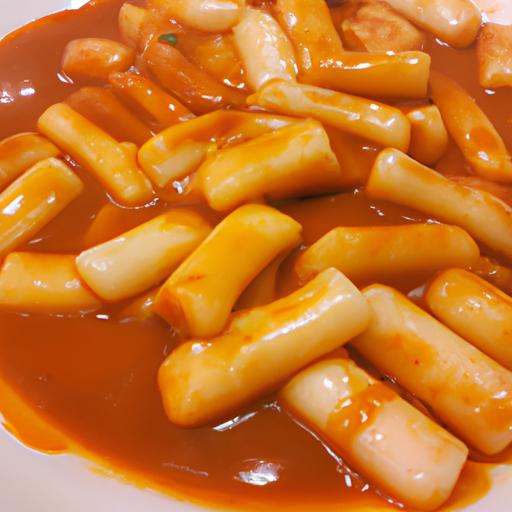Popular Korean Street Foods: A Gastronomic Adventure
Are you ready to embark on a tantalizing journey through the vibrant streets of Korea? Brace yourself for an explosion of flavors, aromas, and textures as we dive into the world of Popular Korean Street Foods. From sizzling skewers to crispy pancakes, Korea’s street food scene is a gastronomic paradise that will leave you craving for more.
Overview of Korean Street Food Culture
Korean street food culture is deeply rooted in the country’s rich culinary heritage. It’s a cherished tradition that brings people together, creating a vibrant and bustling atmosphere. The streets come alive with an array of food stalls and carts, filling the air with mouth-watering scents that beckon passersby.
Importance and Popularity of Korean Street Foods
When it comes to Korean cuisine, street food holds a special place in the hearts of locals and tourists alike. It’s not just about satisfying hunger; it’s an experience that immerses you in the essence of Korean culture. From busy city streets to quaint alleyways, these humble food stalls offer a glimpse into the authentic flavors and culinary traditions that have been passed down for generations.
Korean street foods have gained worldwide recognition for their unique and tantalizing flavors. From the addictive spiciness of tteokbokki (spicy rice cakes) to the savory goodness of hotteok (sweet pancakes), each dish tells a story and leaves an indelible mark on your taste buds.
Brief Explanation of the Main Keyword “Popular Korean Street Foods”
In this article, we will explore the enchanting world of popular Korean street foods. Get ready to unravel the secrets behind the most beloved and sought-after street food items that have captured the hearts of food enthusiasts around the globe. Join me as we delve into the history, flavors, and where to find these delectable treats. Get your chopsticks ready, because we’re about to embark on a culinary adventure like no other. Stay tuned for the top 5 must-try Korean street foods that will take your taste buds on a rollercoaster ride of flavors!
History of Korean Street Foods
Origins and Evolution of Street Food in Korea
Korean street food has a fascinating history that dates back centuries. Its origins can be traced to the early Goryeo Dynasty, where vendors would gather outside temples and markets to offer simple snacks and refreshments to locals and travelers. These humble beginnings laid the foundation for what would eventually become a thriving street food culture.
Over time, Korean street food has evolved and adapted to the changing tastes and preferences of the people. From the royal courts of the Joseon Dynasty to the bustling markets of modern-day Korea, street food has become an integral part of the country’s culinary landscape.
Influence of Traditional Korean Cuisine on Street Food Culture
One cannot talk about Korean street food without acknowledging the profound influence of traditional Korean cuisine. Many street food dishes are inspired by popular traditional dishes, such as kimchi, bibimbap, and bulgogThese iconic flavors are reimagined and transformed into portable and affordable street food options.
The use of bold and vibrant ingredients like gochujang (fermented chili paste), doenjang (soybean paste), and sesame oil gives Korean street food its distinctive and irresistible taste. It’s a harmonious blend of flavors that tantalizes the palate and keeps you coming back for more.
Introduction of Street Food Stalls and Carts
The introduction of street food stalls and carts played a pivotal role in shaping the Korean street food culture we know today. These mobile food establishments provide a convenient and accessible way for vendors to showcase their culinary creations to a wide range of customers.
Whether it’s the iconic pojangmacha (covered food stalls) or the nimble food carts that dot the streets, these mobile eateries have become an integral part of the Korean street food experience. They offer a vibrant and dynamic atmosphere where locals and tourists can gather to enjoy a diverse array of delicious street food.
The history of Korean street foods is a testament to the resilience and creativity of the Korean people. It’s a celebration of the country’s culinary heritage and a testament to the enduring popularity of these delectable treats. Join me as we continue our journey through the vibrant world of popular Korean street foods.
Top 5 Must-Try Korean Street Foods
Korean street foods are a treasure trove of culinary delights that will leave you longing for more. Let’s dive into the top 5 must-try Korean street foods that will take your taste buds on a thrilling adventure.
1. Tteokbokki (Spicy Rice Cakes)
Prepare your taste buds for an explosion of spicy flavors with Tteokbokki, one of Korea’s most popular street foods. This dish features chewy rice cakes smothered in a fiery red sauce made from gochujang (fermented chili paste), soy sauce, and other secret ingredients. The combination of spiciness and chewiness creates a delightful texture that keeps you coming back for more. Don’t be surprised if you find yourself reaching for a glass of cold water to tame the heat!
2. Hotteok (Sweet Pancakes)
For those with a sweet tooth, Hotteok is a must-try treat that will satisfy your cravings. These fluffy pancakes are filled with a sweet syrup made from brown sugar, cinnamon, and crushed nuts. As you take a bite, the warm, gooey filling oozes out, creating a heavenly sensation. The contrast between the crispy exterior and the soft, sugary interior makes Hotteok an irresistible delight.
3. Gimbap (Seaweed Rice Rolls)
Gimbap, often referred to as Korean sushi, is a popular street food that combines the freshness of vegetables with the richness of rice and the umami flavor of seaweed. These colorful rolls are packed with a variety of ingredients such as pickled radish, carrots, spinach, and even kimchGimbap is not only visually appealing but also a convenient and nutritious snack that can be enjoyed on the go.
4. Twigim (Korean Tempura)
If you’re a fan of deep-fried goodness, Twigim is a street food that you must not miss. This Korean-style tempura features a variety of ingredients, including vegetables, seafood, and even meat, coated in a light and crispy batter. From crunchy sweet potatoes to succulent shrimp, Twigim offers a delightful array of flavors and textures that will satisfy your cravings for a savory snack.
5. Bungeoppang (Fish-shaped Pastry)
Bungeoppang is a charming and delightful street food that resembles a small fish-shaped pastry. This sweet treat is made by filling a crispy, golden-brown pastry shell with a sweet red bean paste. The combination of the warm, fluffy pastry and the slightly sweet filling creates a delightful contrast that will have you hooked from the first bite. Bungeoppang is not only delicious but also a visual treat that will brighten up your day.
These top 5 must-try Korean street foods offer a tantalizing glimpse into the rich and diverse culinary landscape of Korea. Each dish tells a unique story and showcases the creativity and flavors that make Korean street food so beloved. So, the next time you find yourself wandering the streets of Korea, make sure to indulge in these delightful treats that will leave you craving for more.
Unique Aspects of Korean Street Foods
Korean street foods are renowned for their unique and captivating aspects that set them apart from other culinary delights. Let’s dive into the distinctive features that make Korean street foods a true gastronomic adventure.
Introduction to the Diversity of Flavors and Textures
One of the remarkable aspects of Korean street foods is the sheer diversity of flavors and textures they offer. From spicy, sweet, and tangy to crispy, chewy, and tender, there’s something to satisfy every palate. Take a bite of tteokbokki, a popular street food made with chewy rice cakes smothered in a spicy gochujang (chili paste) sauce. The combination of heat, sweetness, and chewiness creates a harmonious explosion of flavors in your mouth.
Special Cooking Techniques Used in Street Food Preparation
Behind the scenes of every street food cart or stall, there are skilled artisans who have mastered special cooking techniques that elevate the flavors of Korean street foods. Witness the mesmerizing dance of the pajeon (Korean pancake) being flipped with precision, creating a crispy exterior while ensuring a fluffy and savory interior. Or marvel at the art of making hotteok, where the dough is kneaded and filled with a delectable mixture of brown sugar, cinnamon, and crushed peanuts, then griddled to perfection. These techniques, passed down through generations, contribute to the unique taste and texture of Korean street foods.
Influence of Other Asian Cuisines on Korean Street Food
Korean street food culture has been influenced by the flavors and techniques of neighboring Asian cuisines. The result is a fusion of culinary delights that tantalize the taste buds. For instance, the popular dish called kimbap is a Korean twist on the Japanese sushi roll. It features a delicious combination of rice, vegetables, and sometimes meat, all wrapped in seaweed. Another example is the dumpling-like delicacy called mandu, which bears similarities to Chinese jiaozThese culinary exchanges have enriched the Korean street food scene, offering a diverse palette of flavors that continue to evolve and delight food enthusiasts.
As you delve into the world of Korean street foods, prepare to be amazed by the diversity of flavors, the skillful cooking techniques, and the cultural exchange that has shaped this culinary phenomenon. Get ready to indulge in a medley of tastes and textures that will leave you craving for more. Stay tuned as we move on to discover where you can find these popular Korean street foods and embark on your own culinary adventure.
Where to Find Popular Korean Street Foods
Are you ready to embark on a culinary expedition to satisfy your street food cravings? Let’s explore the vibrant streets of Korea, where the scent of sizzling delicacies fills the air. Here are some of the best places to indulge in popular Korean street foods:
Popular Street Food Markets and Districts in Korea
1. Gwangjang Market, Seoul: Located in the heart of Seoul, Gwangjang Market is a food lover’s paradise. This bustling market is renowned for its wide array of street food stalls offering everything from bindaetteok (mung bean pancakes) to mayak gimbap (addictive mini seaweed rice rolls). Don’t miss the opportunity to sample the iconic bibimbap (mixed rice) served in a hot stone bowl.
2. Myeongdong, Seoul: As one of the busiest shopping districts in Seoul, Myeongdong is famous for its street food scene. Indulge in piping hot tteokbokki, crispy tornado potatoes, and mouthwatering odeng (fish cake) skewers. Don’t forget to try the iconic Korean street food dessert, hotteok, a sweet and chewy pancake filled with brown sugar syrup.
Must-Visit Cities or Regions for Street Food Enthusiasts
1. Busan: Known for its vibrant seafood culture, Busan serves up a delightful array of street food. Head to Jagalchi Market, the largest fish market in Korea, where you can feast on fresh seafood delicacies like sannakji (live octopus) and eomuk (fish cake) skewers. Don’t miss out on the spicy and savory flavors of dwaeji gukbap (pork soup with rice).
2. Jeonju: If you’re a fan of traditional Korean cuisine, Jeonju is a must-visit destination. The city is renowned for its hanok village and its delectable street food offerings. Sample the famous Jeonju bibimbap, a colorful bowl of mixed rice topped with an array of vegetables, beef, and a savory gochujang (red chili pepper paste) sauce.
Recommendations for Specific Street Food Stalls or Carts
1. Myeongdong Gyoja, Seoul: This iconic restaurant in Myeongdong is famous for its mouthwatering kalguksu (handmade noodle soup) and mandu (dumplings). The chewy noodles and flavorful broth will warm your soul and leave you craving for more.
2. Tongin Market Dosirak Cafe, Seoul: Experience a unique dining concept at this traditional market cafe. Choose from a selection of dosirak (Korean lunch boxes) and fill them with various dishes from different stalls. It’s a fun and interactive way to savor a variety of street food flavors in one meal.
Now that you know where to find these delectable treats, it’s time to hit the streets and embark on a culinary adventure you won’t soon forget. So, grab your appetite and get ready to indulge in the irresistible world of popular Korean street foods!
Conclusion
As we bring this culinary exploration to a close, I hope you’ve been enticed by the tantalizing world of popular Korean street foods. From the bustling streets of Seoul to the hidden corners of Busan, these delectable treats have become an integral part of Korean culture and cuisine.
Through the diversity of flavors, unique cooking techniques, and influences from other Asian cuisines, Korean street foods offer a truly unforgettable experience. They showcase the creativity, passion, and dedication of street food vendors who tirelessly prepare these mouth-watering delicacies for locals and visitors alike.
So, why not embark on your own street food adventure? Take a stroll through the vibrant markets and taste the explosion of flavors that await you. Whether you’re indulging in the spicy goodness of tteokbokki, relishing the crispy satisfaction of hoddeok, or savoring the umami-filled bites of gimbap, every street food item has its own story to tell.
Remember, Korean street foods are not just about satisfying your hunger; they’re about immersing yourself in the rich tapestry of Korean culture, forging connections with locals, and creating lasting memories. So, grab your chopsticks, embrace the hustle and bustle of the streets, and let your taste buds embark on a journey they’ll never forget.
In the world of popular Korean street foods, there’s always something new to discover, whether it’s a hidden gem tucked away in an alley or a unique regional specialty. So, don’t hesitate to explore, try new flavors, and satisfy your cravings for adventure and deliciousness.
Get ready to experience the magic of Korean street foods – a symphony of flavors, a feast for the senses, and a gastronomic adventure like no other. The streets are calling, and the delectable delights await. Bon appétit!
“Food is our common ground, a universal experience.” – James Beard






